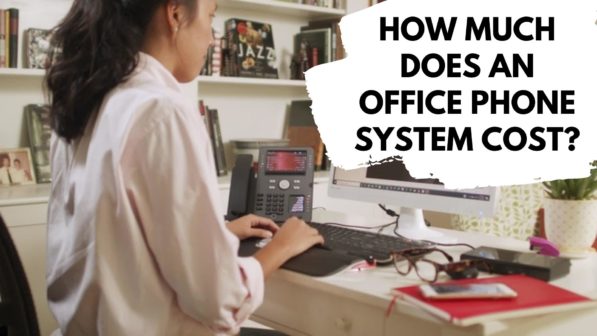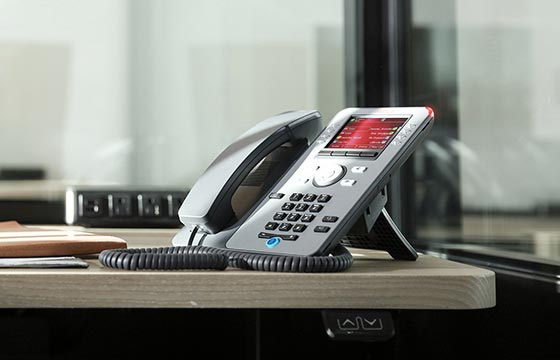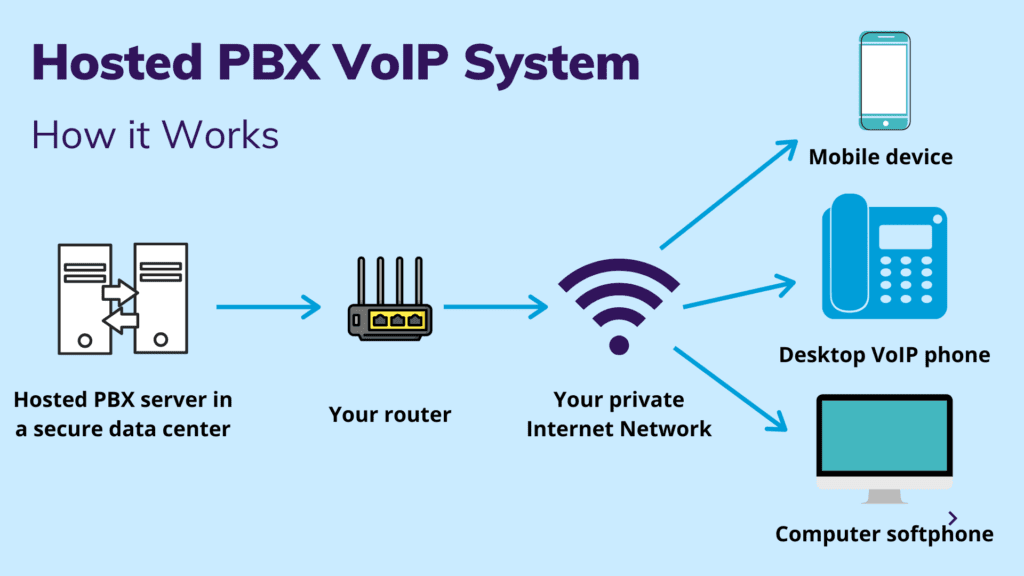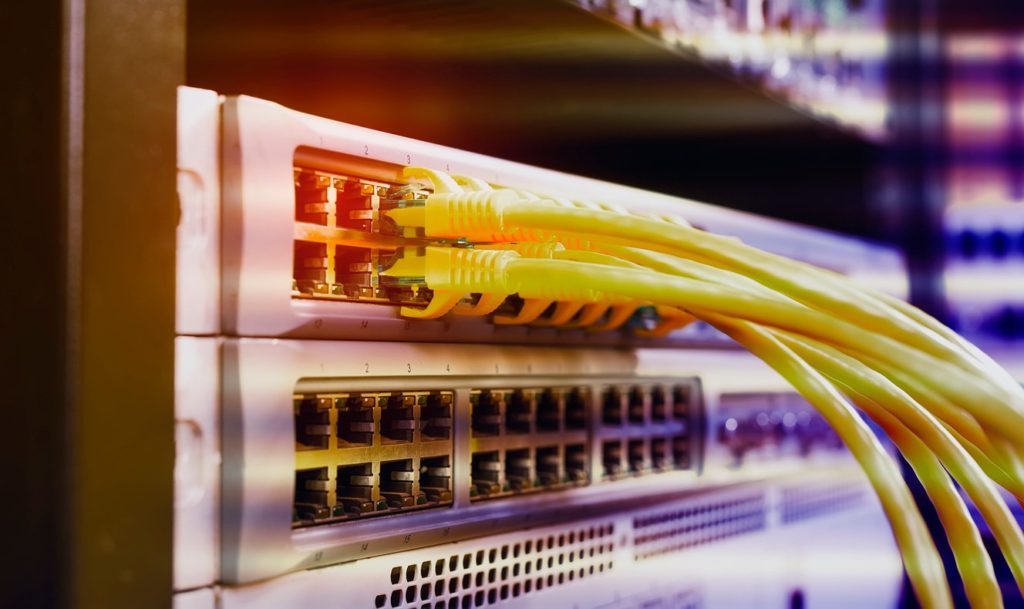Office phone systems are continually being updated and improved, which can lead you on a never-ending quest to have the latest and greatest technology. These systems can seem daunting at first, and figuring out exactly what you need will take some research.
Before deciding what is right for you, it’s essential to consider the costs associated with a new phone system! Switching to a new system doesn’t mean it will be more expensive; sometimes, it can save you money.
Now, I’ll be honest; I won’t give you one fixed price in this article. Each office is unique, and you can adapt phone systems to work in many different configurations. So, figuring out an exact one size fits all price is nearly impossible. We can give you the average costs associated with some modern-day phone systems.
There are two main types of phone systems, hosted (cloud) and non-hosted (on-premise). The first thing you will need to figure out is what system you would be looking to use. There is no right or wrong answer. Each system has different benefits and costs associated with it.
Typically, with a cloud system, you look at a lower cost upfront but a higher cost over time. However, an on-premise system has a higher initial investment, but the overall costs can be lower.
What Goes into the Cost of a Phone System?
There are a variety of factors that will determine your final price. Phone systems are highly customizable and complex, but there are some average prices you can expect systems to cost. The four main factors are:
- hardware
- phone lines
- installation
- service
1. Hardware
First, whether you choose a cloud or on-premise system will determine how much and what kind of hardware you require.
How Much Do the Handsets and Desktop Phones Cost?
How many phones do you need? Are they standard desktop phones, cordless, hybrid, or wireless phones? Do you want them to be IP phones?
Whether you use an on-premise or a cloud phone system, you will need physical phone sets for your office space.
To buy standard desktop phones, you should expect to pay approximately $350 per phone. The more advanced the hardware, the higher the cost.
Unlike most other technology, where you start with a base piece of equipment and add on whatever features you want or need, office phones typically come loaded with excellent features. You can pare back features you don’t see yourself using or select a phone model with reduced features.
Some of these popular features include:
- Unified messaging
- Voicemail-to-email
- Caller queues
- Extension dialling and company directories
- One-button transfer
It would be best to consider what accessories you need with your phone.
Will your team be spending much time talking on the phone? Consider also investing in a wireless headset. For a good-quality wireless headset, you are often looking at $325 each.
You can choose how you want to pay for your phone set, depending on the type of phone system you opt for.
Cloud Phone System
If you decide to go with a cloud phone system, you will be charged on a per-line, per-month basis. You will also need to buy the individual phones upfront, but since your cloud system uses a hosted virtual PBX, it is included in your per-line, per-month subscription.
On-premise Phone System
On the other hand, on-premise phone systems are structured as a one-time purchase of hardware and software, and prices are often discussed per user.
For On-Premise Phones, How Much Does the PBX Cost?
In addition to the phones, many office phone systems rely on a PBX system. A PBX is a piece of hardware that makes both cloud and on-premise phone systems work.
A cloud-based PBX solution’s only hardware is the phone sets, and setup is relatively easy at a low cost. This solution uses a virtual PBX system hosted and maintained in the provider’s data centers—not at your office. This way, you can ditch the system machines, which are cumbersome and require a storage room. This also makes the initial outlay for a cloud PBX system substantially lesser than an on-premise system.
If you use a cloud phone system, pricing can be an all-in, per-user or shared resource pricing with your VoIP hardware.
On the flip side, you will need the phone sets and a PBX system stored inside your business facility for an on-premise phone system.
The average PBX system is $4500. This price can fluctuate based on the type and configuration.
PBX systems require a hefty upfront investment. Therefore, businesses that invest in on-premise telephone systems often face the dilemma of maintaining costs.
Phone Lines
Depending on your phone system setup, you should also factor a cost per phone line into the budget. Typically, each user will have to have a phone line, and these have a monthly fee associated.
Regular phone lines range from $20 to $50 per line per month or $240 to $600 per year.
These phone lines are purchased from a local telecommunications provider (ex., Bell or Rogers) and can be purchased independently of your hardware.
All phone plans offer unlimited nationwide incoming and outgoing calls. However, the starting rates for the plans do not include long-distance.
If your business operates out of the country, you can use a toll-free plan for $10/per user per month that offers them 1,000 minutes of talking time. Over and above 1,000 minutes, each additional minute is $0.04.
Alternatively, when purchasing a new office system, you can move to a more advanced system that runs on SIP (Session Initiation Protocol) lines rather than traditional phone lines. We always recommend our customers move to a SIP line.
How Much Does a SIP Line Cost?
One of SIP lines’ vital cost-saving features is that they are a shared resource, meaning that each user can have a unique phone number without requiring an individual phone line. The average cost of a SIP line is also anywhere from $20 to $50, but since users share them, you don’t need one for each user. For 10 users, you might only need 6 or 7 SIP lines, compared to 10 traditional lines.
Many businesses will reduce their monthly phone bill by as much as 30 percent after switching from traditional phone lines to SIP lines.
What about Installation?
There will also be some associated labour costs when installing a new system. These costs include the programming and installation of your new system! Office phone systems require a particular skill set to ensure it’s set up and working correctly.
Sometimes these costs are bundled (hidden) into the cost of your plan, and other times, they are explicitly broken out in a Statement of Work (SOW), but you should always expect some setup or installation fee.
These costs vary depending on what service is needed and what you are looking for.
The installation cost of a cloud-based system consists of labour costs, usually billed by the hour. Typically, it takes our technicians 1 hour per phone, but every installation varies, depending on the devices and IT environment. Installing one cloud-based phone may add anywhere between $130 and $185.
If you are looking at installing a new PBX, the associated costs for programming and installation can be between $1200 and $3000.
Lastly, Service Costs
Consumers who purchase office phone systems should expect to pay service costs at some point in the future if they want to use them for years. These costs are incurred to keep your equipment in good working order. There are two ways you can account for these service costs – by entering a service agreement contract and paying a one-time fee or paying for Time and Materials (maintenance as you go).
Keeping up to date with regular maintenance can keep costs down because the phone system is serviced promptly. Neglecting it and waiting until the last minute to service them may result in higher maintenance costs. This is why entering a service agreement is usually the wiser choice, as it includes priority service response from experts, remote and onsite diagnostics, advanced parts replacement, and much more.
A service agreement is designed to provide peace of mind that your system is covered should a problem arise.
But isn’t that what a warranty is for? Actually, no. Most manufacturer phone system warranties cover you for parts, not the technical labour to come out, diagnose or replace the part. Additionally, a service agreement is offered by the dealer to protect you beyond the coverage of the manufacturer’s warranty.
Many cloud phone systems include a service agreement bundled into your monthly fee. But if you are buying an on-premises system, you must usually purchase a separate service contract with your local dealer.
All Office Interiors Service Care Agreements have one fixed annual cost of $699 (per switch) plus $10 per phone handset. HST extra.
If you choose to go with a Time and Materials contract, you may look at service call costs of as much as $185 per hour, including travel time and all parts!
In Summary, What Does a Phone System Cost?
Leaning on our decades of experience digging into the details of different phone systems designed to maximize your productivity and keep your phone costs to a minimum, here are our total estimates based on a standard office with ten employees who each need a phone and phone number.
Cloud phone system – Considering all the factors, the total cost of ownership for a cloud solution with 10 phones will be a one-time fee of $4800 – $5300 for hardware plus $250 – $500 per month for the ten subscriptions.
On-premise phone system – The total cost of ownership for one on-premise phone system with 10 phones and a PBX will be $10,000 – $13,000 for hardware plus $120 – $300 per month for the 6 SIP lines.
A New Phone System Could Save You Money
Just how would buying a new phone system save you money? Simple. Your telecommunication provider’s goal is to sell you as many traditional phone lines as possible. An office equipment provider’s purpose is to sell you the solution that will create the most value for your organization.
Before selling a phone system to a customer, we evaluate their phone bill for potential cost savings and line consolidation opportunities. Then we find the plan that will best make that happen while still providing you with the features and communication technology to keep your business running smoothly.
To schedule your free phone assessment, contact us today!
Ahona Saha
Marketing Assistant
Office Interiors









